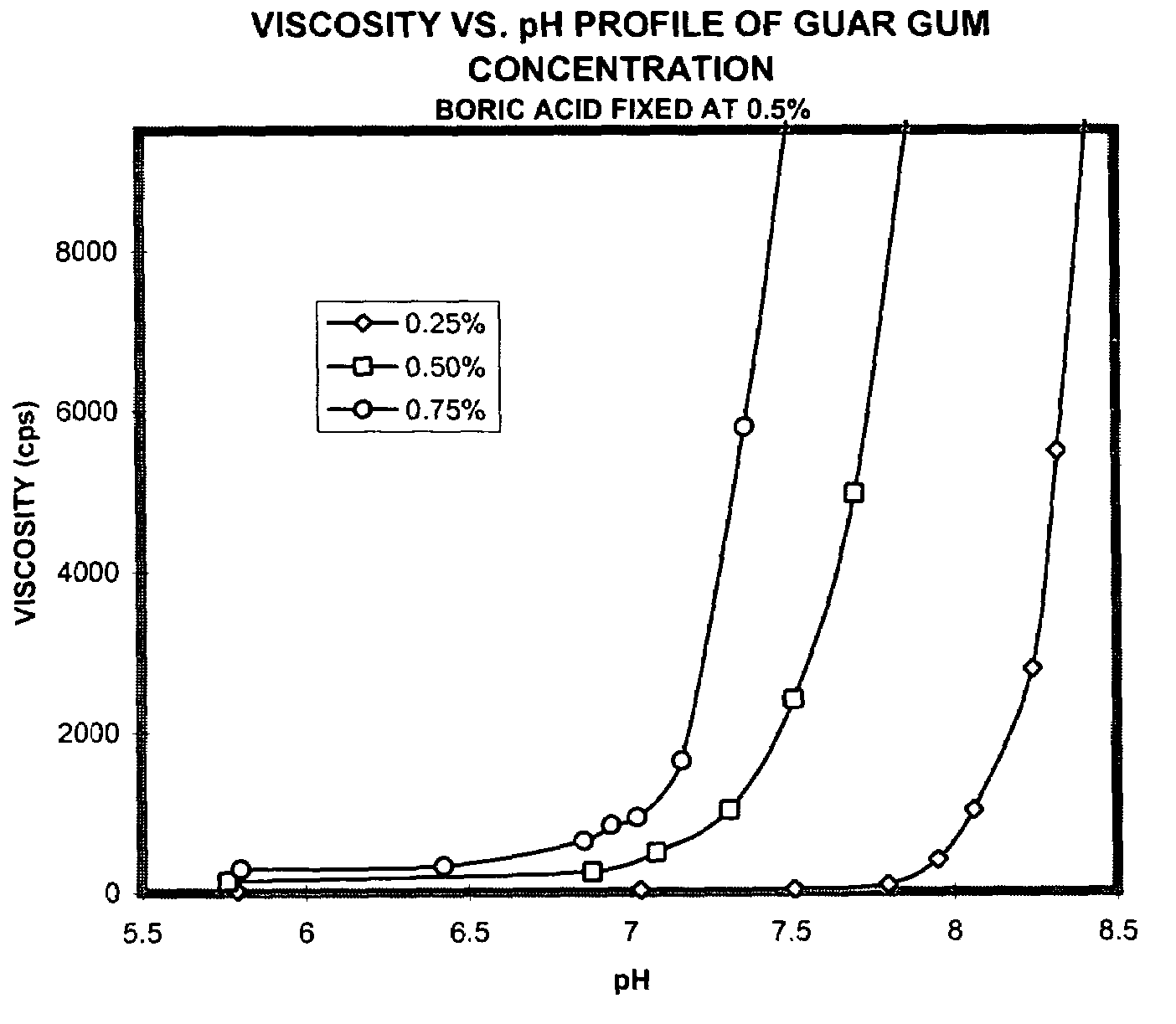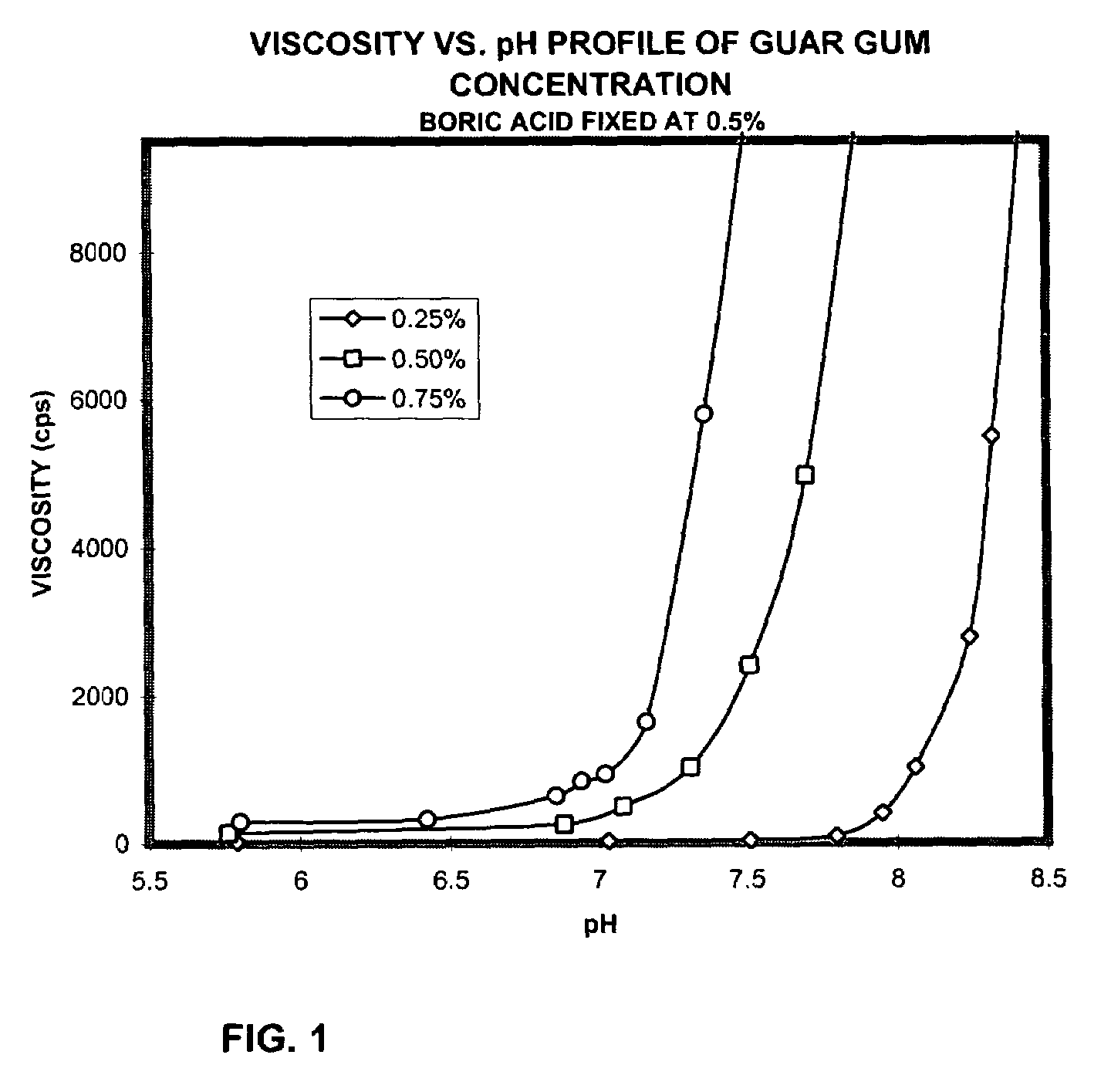Ophthalmic compositions containing galactomannan polymers and borate
a technology of galactomannan and polymer, which is applied in the preparation of sugar derivatives, inorganic non-active ingredients, peptide/protein ingredients, etc., can solve the problems of increasing irritation and toxicity of the composition, requiring modification of the base polymer, and affecting the effect of benzalkonium chloride or other cationic preservatives, so as to minimize the possibility of irritation of the eye, no cloud point, and great vision clarity
- Summary
- Abstract
- Description
- Claims
- Application Information
AI Technical Summary
Benefits of technology
Problems solved by technology
Method used
Image
Examples
example 1
[0037]Preliminarily, a compounding vessel (20 L stainless steel pressure can), a 0.2 micron sterilizing filter, a receiving vessel (20 L carboy), a 4.5 micron polishing filter, a 0.2 micron sterilizing filter, a vent filter, and the filling equipment are sterilized by autoclaving.
[0038]In a beaker equipped with an overhead agitator, add the weighed amount of polyethylene glycol 400 (200 g). While mixing slowly disperse the weighed amount of hydroxypropyl (“HP”)Guar gum (100 g). Mix until completely homogeneous. In a 500 ml Schott bottle, equipped with a magnetic stir bar, weigh exactly 120.0 g of the HPGuar gum / PEG-400 dispersion. Prepare to sterilize by autoclaving. In a second identical 500 ml Schott bottle weigh exactly 120.0 g of the same dispersion. Prepare to use as a dummy during the autoclaving cycle. To both bottles add 1.3 ml of purified water (amount equivalent, by volume, of the microorganism suspension used to inoculate the bottles during the validation study). Mix both...
example 2
[0042]The following is an example of a topical ophthalmic composition containing timolol.
[0043]
CompoundAmount % (w / v)Timolol Maleate0.68*Boric Acid0.5Guar Gum0.5PEG-4001.0Sodium Chloride0.5Benzalkonium Chloride0.01Sodium Hydroxide / Hydrochloric AcidQS to pH 6.5Purified WaterQS*0.68% Timolol Maleate is equivalent to 0.5% Timolol.
[0044]The above formulation is prepared by first preparing a Part I and Part II mixture. The guar gum is first dispersed in PEG-400 and autoclaved as Part I. The other ingredients are dissolved in about 90% of the volume of water and sterile filtered in a receiving vessel as Part II. Part I is then added to Part II aseptically. The pH may then be adjusted aseptically and the batch is then brought to final weight (volume). The combined solution is then passed through a 1.0 μm polish filter, aseptically, to remove the particulates.
example 3
[0045]The following is another example of a topical ophthalmic composition containing timolol.
[0046]
CompoundAmount % (w / v)Timolol Maleate0.34*Boric Acid0.5Guar Gum0.25Glycerol1.0Benzalkonium Chloride0.005Sodium Hydroxide / Hydrochloric AcidQS to pH 7.0Purified WaterQS*0.34% Timolol Maleate is equivalent to 0.25% Timolol.
[0047]The above composition may be prepared in a similar way as the Example 2 composition.
PUM
 Login to View More
Login to View More Abstract
Description
Claims
Application Information
 Login to View More
Login to View More - R&D
- Intellectual Property
- Life Sciences
- Materials
- Tech Scout
- Unparalleled Data Quality
- Higher Quality Content
- 60% Fewer Hallucinations
Browse by: Latest US Patents, China's latest patents, Technical Efficacy Thesaurus, Application Domain, Technology Topic, Popular Technical Reports.
© 2025 PatSnap. All rights reserved.Legal|Privacy policy|Modern Slavery Act Transparency Statement|Sitemap|About US| Contact US: help@patsnap.com



